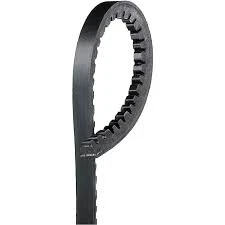- Arabic
- French
- Russian
- Spanish
- Portuguese
- Turkish
- Armenian
- English
- Albanian
- Amharic
- Azerbaijani
- Basque
- Belarusian
- Bengali
- Bosnian
- Bulgarian
- Catalan
- Cebuano
- Corsican
- Croatian
- Czech
- Danish
- Dutch
- Afrikaans
- Esperanto
- Estonian
- Finnish
- Frisian
- Galician
- Georgian
- German
- Greek
- Gujarati
- Haitian Creole
- hausa
- hawaiian
- Hebrew
- Hindi
- Miao
- Hungarian
- Icelandic
- igbo
- Indonesian
- irish
- Italian
- Japanese
- Javanese
- Kannada
- kazakh
- Khmer
- Rwandese
- Korean
- Kurdish
- Kyrgyz
- Lao
- Latin
- Latvian
- Lithuanian
- Luxembourgish
- Macedonian
- Malgashi
- Malay
- Malayalam
- Maltese
- Maori
- Marathi
- Mongolian
- Myanmar
- Nepali
- Norwegian
- Norwegian
- Occitan
- Pashto
- Persian
- Polish
- Punjabi
- Romanian
- Samoan
- Scottish Gaelic
- Serbian
- Sesotho
- Shona
- Sindhi
- Sinhala
- Slovak
- Slovenian
- Somali
- Sundanese
- Swahili
- Swedish
- Tagalog
- Tajik
- Tamil
- Tatar
- Telugu
- Thai
- Turkmen
- Ukrainian
- Urdu
- Uighur
- Uzbek
- Vietnamese
- Welsh
- Bantu
- Yiddish
- Yoruba
- Zulu
Srp . 06, 2024 10:46 Back to list
Understanding the Benefits and Applications of Double Toothed Belts in Mechanical Systems
Understanding the Double Toothed Belt An Essential Component in Mechanical Engineering
In the realm of mechanical engineering, various components play crucial roles in ensuring efficient operation and longevity of machinery. One such component that has gained significant attention in recent years is the double toothed belt. This advanced type of belt drive system has proven to be indispensable in a variety of applications, from automotive to industrial machinery. In this article, we will explore the characteristics, advantages, and applications of double toothed belts, highlighting their importance in contemporary engineering.
What is a Double Toothed Belt?
A double toothed belt, often referred to as a synchronous belt, features teeth along both sides of its length, which interlock with corresponding gears or pulleys. This design allows the belt to engage with multiple gears simultaneously, providing enhanced grip and reduced slippage compared to traditional single-tooth belts. Typically made from durable materials such as rubber or polyurethane, double toothed belts are designed to withstand considerable wear and tear while maintaining their structural integrity.
Advantages of Double Toothed Belts
The double toothed belt offers multiple advantages that make it preferable over other belt types. First and foremost is the improved power transmission efficiency. The engagement of teeth with gears ensures that power is transmitted smoothly, minimizing energy loss caused by slippage. This characteristic is especially beneficial in applications that require precise timing and synchronization, such as in timing belts used in automotive engines.
Another significant advantage is the reduction in maintenance requirements. Because double toothed belts reduce the risk of slippage and ensure a consistent performance, they typically require less frequent adjustments compared to chain or single belt systems. This translates to lower downtime and maintenance costs for machinery operators.
double toothed belt

Additionally, double toothed belts operate more quietly and produce less vibration than their counterparts. This feature not only contributes to a better working environment but also prolongs the lifespan of other associated components, reducing the overall costs associated with repairs and replacements.
Applications
The versatility of double toothed belts allows them to be utilized across a wide range of industries. In the automotive sector, they are commonly used in timing systems, where precise timing is critical for optimal engine performance. The engagement with pulleys ensures that the movements of the engine’s camshaft and crankshaft are synchronized perfectly, preventing costly engine failures.
In the industrial manufacturing sector, double toothed belts are employed in conveyor systems, robotics, and other machinery that demand high efficiency and reliability. Their ability to deliver consistent power without loss makes them ideal for applications that require continuous operation.
Moreover, double toothed belts are gaining traction in the realm of renewable energy, particularly in wind turbines and solar tracking systems. The ability to transmit energy efficiently and minimize maintenance aligns well with the goals of renewable energy technologies, which prioritize sustainability and efficiency.
Conclusion
In conclusion, the double toothed belt is a pivotal component in modern mechanical engineering, offering numerous advantages that enhance the performance and reliability of various machines. Its design facilitates efficient power transmission, reduces maintenance needs, and provides quiet operation, making it an ideal choice for a wide array of applications. As industries continue to innovate and seek more efficient solutions, the significance of double toothed belts will undoubtedly grow, solidifying their place in the future of engineering.
-
Korean Auto Parts Timing Belt 24312-37500 For Hyundai/Kia
NewsMar.07,2025
-
7PK2300 90916-T2024 RIBBED BELT POLY V BELT PK BELT
NewsMar.07,2025
-
Chinese Auto Belt Factory 310-2M-22 For BMW/Mercedes-Benz
NewsMar.07,2025
-
Chinese Auto Belt Factory 310-2M-22 For BMW/Mercedes-Benz
NewsMar.07,2025
-
90916-02660 PK Belt 6PK1680 For Toyota
NewsMar.07,2025
-
drive belt serpentine belt
NewsMar.07,2025

